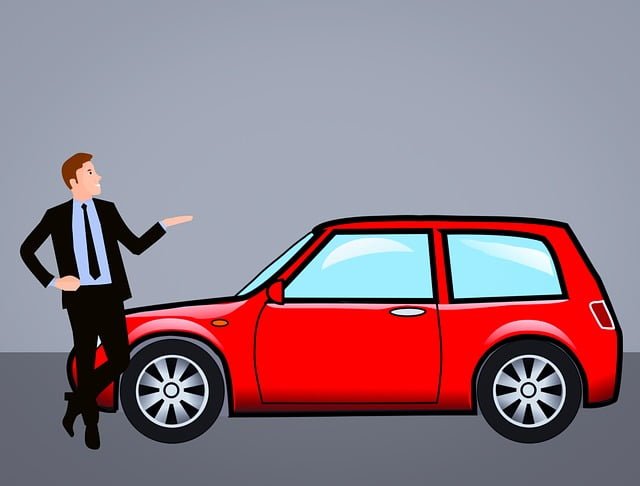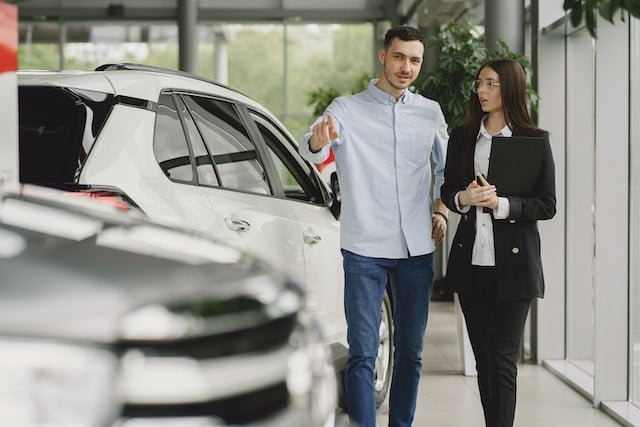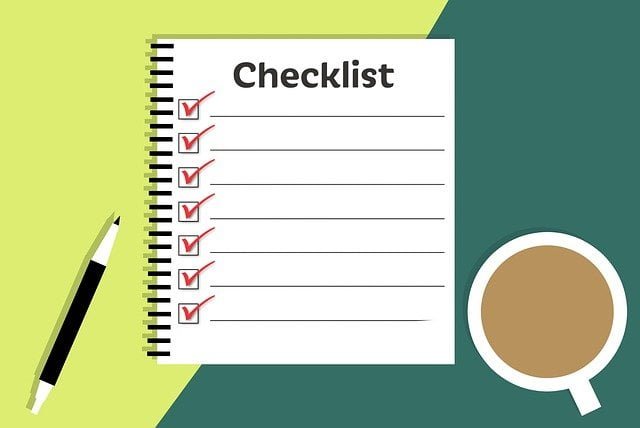Selecting & Buying your first car
Learning the process of selecting, inspecting & buying your first car

Buying a used car can be stressful, frightening, and difficult, especially if it is your first car.
The problem is that you never know if the vehicle is as excellent as it appears, as good as the seller claims and whether you are going to regret your decision in 6 months time.
In reality, it should take you a long time to reach the point when you’ve decided on a specific car.
There are several steps involved, and the first step in your car purchase process is determining what type of car you actually require. What is the primary function of any car you purchase, and what secondary or tertiary uses might you have for it?
For instance, your primary function for the car will be to drive to and from work, 5 days a week, which is a 70km round trip. When thinking about secondary roles for your car, you love the idea of being able to go on weekend adventures and look forward to getting a dog and then being able to take your partner and your dog to the beach on weekends.
The tertiary role you have in mind is that later when you’re making a bit more money, you’d like to save up and buy an off-road bike, maybe 125 or 250cc and take that on your weekend adventures.
So it would appear that you are going to be driving a lot of kilometres every month, there could be camping involved, suitcases or duffle bags, a need to secure a large dog transport crate in the back, as well as some bulky items such as a tent, fishing equipment, eskies and sleeping bags etc.
Later, down the track, you’ll need to transport a motorbike on the weekends as well.
Assume you have a limited budget and don’t want to have to modify your vehicle to achieve all you want to do. Given the amount of driving you expect to perform, you will require a car that is both dependable and fuel efficient.
You will need some space to accommodate all of your secondary demands, and you may need to limit your purchase options to a van, utility, or vehicle that can tow a trailer if you also need to satisfy your tertiary requirements.
If you are going to go well off road with your weekend adventures, you may need to additionally restrict your purchase to a 4 wheel drive vehicle but if you are only going to be driving along main roads (bitumen or well maintained gravel roads), then a 2 wheel drive vehicle may suffice.
For dependability, you may wish to lock in that you will only buy a diesel engine vehicle, some diesels are actually more fuel-efficient than hybrids and considerably less expensive to purchase.
Aside from fuel savings, diesel engines often provide better durability, torque, and power than unleaded engines since they must maintain higher compression ratios, resulting in longer engine life.
The next question is if you can drive stick (manual gearbox) or are restricted to buying a vehicle with an automatic gearbox. Maybe your currently drivers licence solely allows you to drive automatic transmission vehicles?
The reason for asking this is because manual transmissions are normally better on fuel efficiency than automatics because shifting between gears requires less work on the part of your cars engine; as a rough estimate, I believe you could save around 1 litre per 100kms. For the purposes of this exercise, we’ll assume you are restricted to an automatic gearbox.
Develop selection criteria for buying the car that best fits your equation.

So we know that we need a 4cyl, turbo diesel engine, an automatic transmission, and a body style that is a van, wagon, or utility with a tow bar. We’ll also avoid anything that’s over 8 years old (2014 to 2022 only), has done over 150,000 kms and target vehicles that have standard fuel economies of 9 litres per 100km or better.
We’ll say that the upper value we can consider is $15,000
Let’s now have a look online on carsales.com

Our search was initially restricted to NSW, Australian and retrieved two vehicles meeting our selection criteria
Both were SUV’s, one was a 2014 Holden Captiva 7 seater 4WD wagon, this one also has roof racks and a roof luggage pod and the other vehicle was a 2014 Ford Kuga 4WD wagon
Although both of these were private sellers, but we’ll pretend that they were both available from Car Yards as I think you are better protected this way, they are licensed sellers; they must give you your rights and as long as the vehicle is of a certain age etc, they must give you 3 months warranty
Buying your first car from a car yard

The used car salesperson you wind up dealing with will almost instantly recognise that you are new to owning a vehicle and likely have little to no automotive knowledge, and they will shower you with facts about the vehicle; nonetheless, they will almost always be extremely well mannered.
They will often tell you that it has been through their workshop and that their personnel have gone over this vehicle from head to toe, and they will go to great lengths to assure you that there is no risk in purchasing this vehicle from them because you also get a three month statutory warranty. Which, if true, is really comforting knowledge, but you will need to verify everything.
You should note that typically dealers only need to provide you with the three month warranty if the vehicle has done less than 160,000 kms and if the build date is no more than 10 years before the day of the sale (this is why we made some search restrictions earlier)
Don’t be intimidated or upset by their behaviour; it’s their job, it’s how they make a living, so you just have to accept that it’s going to happen and let them wear your ears out ‘doing what they do’.
Although you might never end up regretting buying a used car, it is a slightly risky business, even from a dealer and you just need to mitigate those risks. After all, you’ve probably worked very hard to be in a position to finally be able to buy your first car.
This is the reason why a pre-purchase Inspection is essential before committing to the purchase of any vehicle, no matter how much of a good deal you think it is or are being told it is.
Below is a very good video from the Australian State of NSW and their Department of Fair Trading, advising buyers of what do when buying a vehicle.
You may need to get a few pre-purchase inspections done in order to work out what car is best for you so you will need to make sure you can afford to get these done prior to turning up at a car yard.
Last but not least, a Vehicle History Check/REVS/VIN Check is always advised before buying a used automobile. This is to ensure that the car is safe to buy, has never been written off, and is not financed. The car’s value is typically lower than the industry average if the REVS Check is accompanied by a written off or stolen title, and if the vehicle is financed, further vigilance is needed.
If you get your pre-purchase vehicle inspection performed by a reputable Motorist Association such as the NRMA or RACQ, the REVS check is included as part of the pre-purchase inspection. Check your local area to see what companies are available to provide such services.
If you cannot afford to have pre-purchase vehicle inspections performed on all of the vehicles you wish to look at, please ensure that the one you truly like has one performed.
If you cannot afford a pre-purchase inspection to be done for you.

1.
The engine must run smoothly,
without excessive noise, vibration, or trembling, whether the car is stationary
or in motion.
2.
If the engine oil is still in
good condition, it should be somewhat transparent and have an amber or honey
colour rather than being very dark or black.
3.
If the oil has a milky or foamy
texture as well as a creamy colour, it most likely implies coolant
contamination, which would indicate one or more failed engine gaskets or seals.
4.
When the oil is a dark brown colour,
it has probably been in the engine a little bit too long and needs to be
replaced soon, it could also mean that the oil could actually be new but with a
lot of additives in it.
5.
When the oil turns black, it
probably depends on whether it’s mineral-based or synthetic, but if it’s also
thick, it’s been exposed to dirt, dust, and other impurities that will
eventually lead to soot build-up. If the oil is black but the viscosity remains
normal, the explanation could be premature darkening caused by particular
additives, so it may still be ok. I
guess it comes down to what type of engine oil is in the engine; for my mind,
if the oil has been in the engine long enough to turn black, it suggests to me
that the properties of the oil have probably broken down over time as it’s
potentially been cycling with contaminants at a high level of heat, and I will
schedule a change soon.
6.
Any white smoke coming from the
vehicle should be thin and vapour like and disappear on the engine warms up. If you see any blue,
grey or white smoke, the car can potentially have mechanical faults.
7.
Black smoke generally indicates
that your engine is burning too much fuel. This can be because the engine isn’t
getting enough air because the air filter is clogged. Other issues, such as damaged
fuel injectors, sensors, and fuel pressure regulator, may also be to blame. A
blocked or clogged fuel line may potentially be the cause of the black smoke.
8.
Blue smoke is a sign that the
engine oil is being burned in the car. This occurs as a result of worn-out
piston rings allowing oil to leak into the combustion chamber and burn with the
fuel there. Blue smoke can also mean that the blower in a turbocharged car
needs to be replaced. Because burning oil can damage a car’s spark plugs, the
car might have trouble starting
9.
Grey smoke might be caused by the
car burning oil or it has a faulty turbo charger. It could possibly be because
the engine is consuming the automatic transmission fluid. This is most likely caused
by a faulty transmission modulator, which allows transmission fluid to enter
the engine and burn up.
10. When
checking the radiator coolant, there should be no residue on the coolant cap.
Clean and brightly coloured coolant, often green or red, is good news.
11. Hopefully,
you won’t find any fluid leaks, but any leaks under or around the car should be
thoroughly scrutinised. Examine the engine compartment and the undercarriage
for evidence of oil, coolant, or other leaks that could signal inadequate
maintenance and future repairs being required.
12. Verify
that the vehicle identification number (VIN) on the registration documents
matches the VIN on the vehicle. A little silver construction plate that is
typically at one of the back corners of the engine compartment can be found by opening
the bonnet and looking there.
13. Examine
all of the lights, including the indicators. Having someone to assist you makes
this job go much more quickly. Someone is required to assist in testing the
brake lights.
14. Look
for dents, ripples, loose or mismatched panels, paint over spray, rust, or signs
of crash repairs when inspecting the car’s body. Don’t forget to jack the car
up and look below it as well.
15. Examine
the interior completely, looking for stains, scratches, cracks, or wear and
tear on the seats, carpet, and internal plastics. Use logic to determine
whether the condition is consistent with the vehicle’s age.
16. Electronics
can be costly to get repaired at times; ensure that all of the automobile
electronics, including the air conditioning and fan, power windows and mirrors,
music system, satellite navigation, parking sensors, and reversing camera, are
operational.
17. Avoid
being caught with poor quality, damaged, or bald tyres; ideally, the tyres
should be of the same brand and pattern. Check the tread and sidewalls for any
tears or damage; this could constitute a safety hazard and requires quick replacement.
In NSW, driving with tread less than 1.6mm is illegal.
18. Check
that all of the seatbelts are in good functioning order and are free of damage
or fraying. If there is a back seat, naturally ensure that the rear seat belts
are in good functioning order as well.
19. While
the engine is running, check the warning lights; if there is a red light,
forget about that car and go look at another one; if the light is amber, give
the dealer the opportunity to explain; it could be a faulty non-critical
sensor, but if this is your first car, you should probably move on and look at
another one; it could cost you a few hundred dollars just to find out you don’t
need to worry about that amber light.
20.The Jack
and tool kit should be in the car somewhere, and this is a essential requirement
in all cars, regardless of the type or age.
21. Take
your time and test drive the car for as long as the dealer will allow you; the
used car road test is just as important as the pre-purchase vehicle inspection
and must always be done before you make the purchase. Check that the vehicle
runs smoothly, that the gear shifts are smooth, that the auto gearbox is not
slipping, and that no loud or strange noises are produced while driving.
Contact Us


